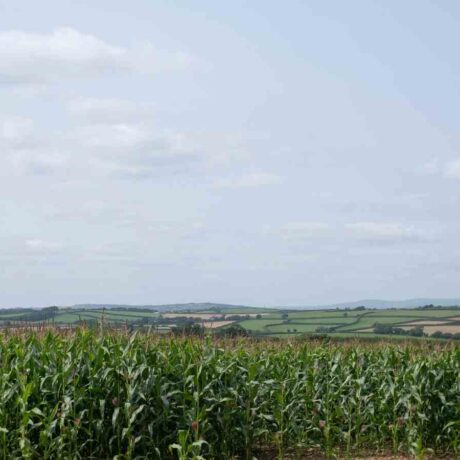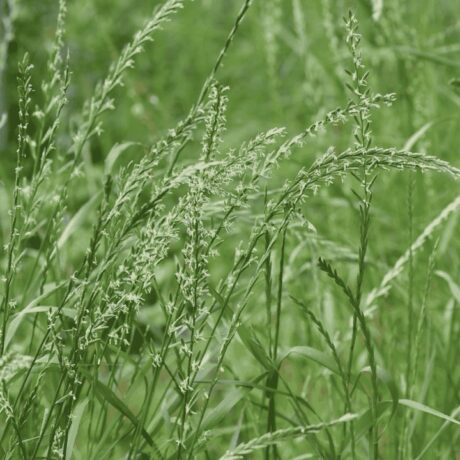Organic September Spotlight: How Far Organic Farming Has Come (and What’s Next?)
Dr Dannielle Robb
Sep, 15 2025Key points:
- Evidence of Healthy Soils: Organic farming can improve soil health factors, especially soil biology. But do you need to go organic to reap these benefits? This report underscores practices that all farmers – organic or not – can consider in improving their soil, the key asset on any farm.
- Profitability Gap Narrows: While organic yields can typically be 18% lower than conventional, price premiums (20–30%) can offset this, making organic farming financially viable, but only with the right market and policy support.
- UK Needs to Rethink Policy: The UK is lagging in support for organic farming, despite rising consumer demand. Imports are filling the gap. Stronger policies, such as conversion payments, farm advice programmes, consumer education, and procurement support, often evident in EU counterparts, are needed to strengthen domestic production.
Organic farming has transitioned from a niche movement into a well-studied approach at the heart of sustainable agriculture. As we celebrate Organic September – a month-long focus on organic food and farming – it’s a good time to reflect on how far organic practices have come in the UK and internationally. Drawing on recent research and industry data, this article explores soil health, farm profitability, and policy support, while offering actionable insights for farmers and agri-professionals.
Healthier Soils: Organic’s Living Legacy
One of organic farming’s clearest successes has been its positive impact on soil health. Organic systems rely on natural inputs (compost, manure, diverse rotations) and biological processes to maintain fertility. The result? Soil that is richer in life and resilience. A recent comprehensive review of 463 studies in temperate climates (Dongo, 2025) shows significant improvements in soil biological activity under organic management:
- Microbial biomass: +34-84% increase in soil microbes in organic vs conventional fields
- Earthworm abundance: +78% higher earthworm populations on average under organic management
- Nitrate leaching: -26% reduction in nitrate loss from soils with organic practices
Healthier soils mean not only improved biodiversity below ground, but also cleaner water, stronger resilience, and potential carbon sequestration. The message applies beyond organic: all farmers can benefit from practices like diverse rotations, organic matter additions, reduced agrochemical use, and fostering soil biodiversity.
Profitability and Yields: Closing the Gap
Historically, the biggest question mark around organic farming was whether it could be productive and profitable enough. Organic yields are often lower than conventional yields, especially during the early transition years. However, decades of data and a number of systematic reviews reveal a more encouraging picture today: with the right market conditions and support, organic farms can achieve comparable financial performance to conventional farms – and sometimes even better.
- A global meta-analysis found organic yields average 18% lower, yet 20–30% price premiums often more than offset this gap. In fact, a 5–7% premium may be enough to break even (SC Department for Agriculture, 2015).
- In the UK, Farm Business Survey data show organic farm incomes broadly comparable to conventional farms across several sectors (Villa, 2021).
Still, organic economics hinge on two key factors:
- Premiums – Consumers must be willing to pay more, and supply chains must deliver fair returns.
- Policy support – Conversion is the hardest phase: farmers must follow organic standards but cannot yet market their produce as organic. Yields may dip while premiums remain out of reach, creating a financial squeeze.
EU countries help offset this through area-based subsidies, recognising the public benefits organic farming provides. With such measures in place, organic farming can stand as both an environmental and economic success.
Policy and Adoption: The UK in Context
As organic farming’s benefits and viability have become clearer, many governments and industry bodies have set ambitious goals to scale up organics. Europe leads the charge: the EU’s flagship target aims for 25% of farmland to be organic by 2030, a dramatic increase from roughly 10% today (Mohring, 2024). Several European countries are already well ahead – for instance, Austria has about 27% of its agricultural land organic (the highest in Europe), and nations like Denmark, Sweden, and Germany are pushing toward 20–30% organic land in the coming years. This growth is propelled by strong policy support: from conversion payments and farm advice programmes to consumer education and procurement policies favouring organic produce.
The UK, however, has stalled. Only about 3% of farmland is organic, a figure largely unchanged in recent years (FarmingUK, 2024). Meanwhile, demand is climbing: the UK organic food and drink market logged its 12th straight year of growth in 2023, reaching £3.2 billion in sales (nearly double its 2011 value). Much of that demand is met by imports.
Why the disparity?
- Policy gaps: Less government support than in Europe.
- Market structures: Weaker supply-chain incentives for domestic producers.
The Soil Association (2024) has called for a “radical rethink,” urging policymakers, retailers, and industry to work together on conversion support, domestic production, and consumer access.
Actionable Takeaways for Farmers & the Industry
Organic September is not only a celebration of organic food and farming – it’s also a prompt to consider actionable insights that can benefit farms today. Whether or not one is ready to go “all-in” on organic certification, the lessons from organic farming’s journey can inform better agricultural practices and strategies in the round. Here are some key takeaways:
- Build Soil Wealth: Soil is every farmer’s core asset. Adopting organic techniques for soil building can pay off. Even conventional farms can borrow organic practices – for instance, planting cover crops or diversifying rotations – to improve soil health, fertility, and drought resilience.
- Mind Your Inputs: Organic farming shows that it’s possible to rely less on synthetic inputs in some systems. It’s a stepwise journey: start by monitoring soil nutrients closely and using inputs more judiciously, which is aligned with both organic principles and good business.
- Plan for Profitability: Leverage available conversion support grants and line up your marketing channels early – whether that’s organic milk buyers, grain processors, or local direct-to-consumer sales – to ensure you can secure the premium your organic produce warrants.
In summary, organic farming has come a long way: what started as an alternative philosophy is now backed by solid data and growing adoption worldwide. The UK’s organic sector has achieved a lot, but there is room to grow further – especially in domestic production and policy support.
As we reflect during Organic September, the overarching message is one of integration: integrating the hard-won lessons from organic practices into the broader agricultural mainstream.
References
- Dongo, 2025. Benefits of organic agriculture for environment and animal welfare: a comprehensive review – FoodTimes
- SC Department for Agriculture, 2015. 2015-06-agriculture-profitable-farmers.pdf
- Villa, 2021. 2015-06-agriculture-profitable-farmers.pdf
- Mohring, 2024. Farmers’ adoption of organic agriculture—a systematic global literature review | European Review of Agricultural Economics | Oxford Academic
- FarmingUK, 2024. UK organic farmland remains static despite growth in organic market – FarmingUK News






